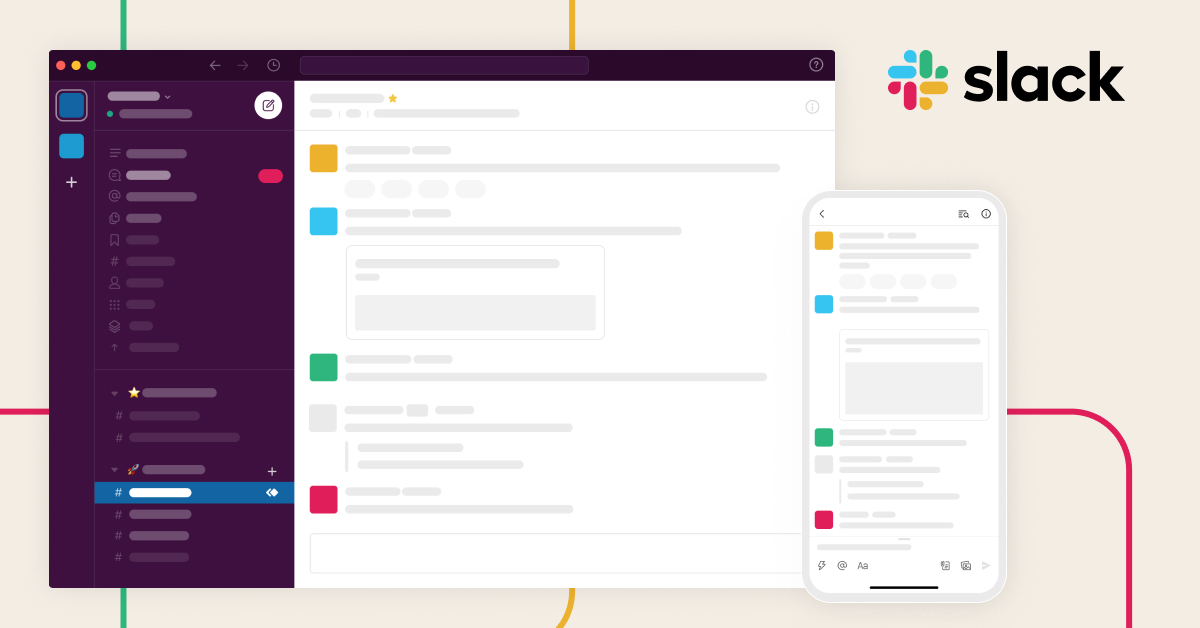 We chat with Zapier CEO Wade Foster, who shares how one of the fastest-growing remote companies in the world onboards their employees, manages Slack, organizes communication, and more.
We chat with Zapier CEO Wade Foster, who shares how one of the fastest-growing remote companies in the world onboards their employees, manages Slack, organizes communication, and more.
Check out Wade Foster’s segment on The Employee Onboarding Podcast:
Available now on Apple, Spotify, Google, Podchaser, Podcast Addict, Deezer, & all your favorite podcast platforms!
Or if you’d prefer, here’s the Employee Onboarding Secrets segment with Wade Foster in full:
- The early days of Zapier
- What changed the trajectory of Zapier?
- How does Zapier use Zapier itself?
- How to manage a Slack HQ with 500+ employees
- Successful strategies for going remote
- Zapier’s onboarding process
- Self-serve content vs. structured lessons
The early days of Zapier
Wade: “We started Zapier almost a decade ago now in September 2011.
I was working at a mortgage company, in their email marketing department. When working in email marketing, you’re often dealing with different tools and systems all the time, and it is very common to have to do integration work. I didn’t really think much of it at the time; it just seemed like a hurdle that every person who worked in email had to deal with.
My co-founder Brian and I were doing a lot of freelance work on the side, and one day, he’s like, “You know what? We see all these integration needs across these different tools; I bet we could build a simple system that makes it easy to trigger events back and forth between the things.” And that was the light bulb moment for me where I was like, “Oh shoot, that would just be so great for me and my day job. If I had something like this, my life would be a lot easier.”
So, that was the starting point of the idea.”
What changed the trajectory of Zapier?
Key takeaways:
- The first version of Zapier had a single trigger and single action.
- After realizing this first iteration was too simple, they launched their first version of Multi-Step Zaps, which allowed you to take multiple actions from it.
- It went from a simple, personal productivity tool, to a full on automation suite.
Wade: “The first version of Zapier had single trigger and single action–do something with this app, post something there–and that was pretty beloved. But pretty quickly we realized that there was a pretty big opportunity to help folks with more sophisticated workflows.
You would see in all types of businesses that folks would want to just chain across different apps, or they would want to take multiple actions in a certain app, or be able to use logic to route one direction around a different direction.
And so, in 2016, we launched our first version of Multi-Step Zaps which allows you to take multiple actions from it. I think that’s really what changed what was possible from Zapier.
It went from a simple, personal productivity tool, to a full on automation suite that empowered a whole host of different things to be used.”
How does Zapier use Zapier itself?
Key takeaways:
- Feeding alerts into Slack;
- Hybrid communication and project management;
- Scheduling.
Slack
Wade: “The company’s communication platform is Slack, and so we dump a whole bunch of alerts into Slack for a ton of different things.
In fact, we have a whole naming convention around this where if you see any channel inside of Zapier that starts with “Feed”, it’s usually a bot that’s posting key information based on some sort of logic.
It could be customer events, Apple alerts, registrations for an event that we’re having, customer tickets, you name it. They will set up a feed channel that just dumps information into there to make sure that folks are up to date on what’s going on for key events that are happening around the company, or with our customers, or with the product itself.”
Hybrid communication & project management
Wade: “The second set of use cases that is really common inside of Zapier is sort of like hybrid communication and project management.
So, a lot of routing things into a database-type environment and being able to collect that stuff to then create query environments for folks to come in and review what’s in there over time.
Imagine a user research team is setting up surveys, forums, and recordings of interviews with customers, and they want to log all that stuff in a particular place. In our case, a lot of that goes into an Airtable database or something, depending on how structured the data is or isn’t. So, being able to route all of that material into a home that folks inside the company can come back and reference later and go, “Hey, I wonder what features were getting common requests for over the last six months?” Great, pop in there, and see what the user research team has uncovered for us.”
Scheduling
Wade: “Probably a third thing that’s really common is around scheduling.
There’s a lot of automation around Talently, Google Calendar, and email events out to customers to help coordinate a whole host of different things. It might be user research trying to schedule with customers, or recruiting teams trying to schedule with candidates, etc. Anytime you might see us doing this sort of same job over and over again, there’s likely a Zap (or system of Zaps).”
How to manage a Slack HQ with 500+ employees
Key takeaways:
- Use naming conventions.
- Enforce Slack etiquette.
Naming conventions
Wade: “One of the key things is naming conventions. For example, location channels start with a city. So, San Francisco, New York City, Miami, etc. And those end up being channels where people who live or are visiting a particular city will join in and form little local meet ups, get togethers, and things like that.
We also have fun channels. These are off topic channels and are not work related. So, if you see anything like that, you can safely assume no work is going on there. Just good old fashioned camaraderie, team building, water cooler type talk.
We have team channels, and these tend to be channels that are specific to a particular team. So, they coordinate most of their discussions inside of that.
There are work groups. So, if there’s a short term project that’s getting together for a particular thing, those will pop up and then shut down over time.
We have incidents. Any time there’s any sort of incident we’re dealing with, these get auto-created and they have an incrementing numeral that goes with them. So, we can route back to them over time.
These naming conventions really help with wayfinding for new folks who are joining the company.”
Slack etiquette
Wade: “Second thing is Slack etiquette.
So when you join the company, we have an etiquette guide on how to participate inside of Slack at Zapier. This includes things like: how to use threads, how to use emojis, how you communicate, what is inbounds vs. off bounds in terms of how you show up, code of conduct type material, guidelines around use of public channels vs. DMs vs. private channels, etc.
All this stuff helps people who are joining the company get acclimated to what is a quite large Slack instance.”
Successful strategies for going remote
Key takeaways:
- Treat your company culture in the same way that you treat your product.
- Help your employees connect with each other through onboarding.
- Find places for employees to connect outside of work.
Wade: “Loneliness is a real challenge with distributed teams. [Remote teams need] a sense of connection to a bigger mission, a bigger purpose, a bigger cause. So, how do you make that connection happen?
Treat your company culture the same way that you treat your product
Wade: “Treat your company culture in the same way that you treat your product.
So, when you’re building a product, you ask for user feedback, you try to know what your features are, what your bugs are, why people love your product, why people might not be a good fit for your product, etc.
If you do the same thing for your culture, you’re going to create a better culture for the types of people that can be successful inside your organization. So, that means surveying your folks, interviewing your folks, talking to them regularly about what’s working and not working, deciding what the most important bugs of your company are, and how you’re going to fix them over time, etc.
As a result, that gives you a lot of ideas for relevant material and how to make the company better.”
Help your employees connect with each other through onboarding
Wade: “Spend a lotta time thinking about what your company’s onboarding process looks like. You wanna make sure that, on Day 1, folks are finding ways to plug into your company in ways that are going to be effective.
Every two weeks, we start a group of people together and they go through onboarding–very intentionally–together, through a mix of live learning on Zoom and asynchronous learning via other tools. This allows them to sort of forge bonds with each other and these bonds tend to last for the tenure of their time in Zapier. And these folks can be all across the company. They just onboard together and you create that sense of community right away.”
Find places for employees to connect outside of work
Wade: “The second thing is finding places for folks to build connections in not super working environments.
Those fun channels that I talked about are really important for building camaraderie. We use Donut chats (there’s a Slack bot called Donut.ai that will match people), and off-sites are great in non-pandemic times.
Then, even in work settings, like team meetings, it’s useful to add non-work discussion items. We start [meetings] with a sometimes silly, off-topic topic or question. It’s a way to help people realize that we’re still working with other humans, because what I’ve found is in remote environments, things tend towards the transactional, and it’s always about the work. So, if that’s all work is, it really starts to feel lonely, disconnected, you start to feel unimportant. So, finding ways to put humanity into remote work is really important.”
Zapier’s onboarding process
Key takeaways:
- First is getting to know the onboarding cohort;
- Then, they need to understand the core strategies of the business;
- Then, you have your cultural pillars that people need to understand;
- Lastly, they need to learn company etiquette.
Wade: “The first week is fully dedicated to company onboarding.
The second week is closer to half company onboarding and the other half is more getting up to speed with your team, what their goals are, and what sort of initiatives you’re going to be more involved with.
Then by the third week, you’re fully integrated with your team.”
Get to know the team
Wade: “First is getting to know the onboarding cohort and people they need to know inside the company. For example, the founders, various executives leading different sessions on particular topic areas, HR reps, etc.
These key connection points really help them establish some routing spots to go to when they have questions, and that’s important.”
Core strategies of the business
Wade: “Then, they need to understand the core strategies of the business. What are you trying to achieve here broadly? What is the company trying to do? What are your goals as a company? I think if people know that, it helps them make decisions over the long haul.
And, as an extension of the company strategy: Who are your customers? What do they care about? What don’t they care about? Having that also helps them make decisions over a long haul.”
Cultural pillars
Wade: “Then, you have your cultural pillars that people need to understand.
If you have a set of values, leadership principles, or things like that, you want to help people understand them. What is the rewarded behavior inside of the company? What are the things that aren’t rewarded? How are you the same or different from other types of companies they may have worked at in the past?”
Company etiquette
Wade: “I also bake into etiquette as well.
So, how to utilize things like Slack and Zoom, when we have meetings, when we don’t have meetings, how to communicate, how to use emojis, etc.
All these things might feel small in the grand scheme of things, but they’re things that shortcut the learning curve and help you reinforce your culture rather than disperse your culture over time.”
Self-serve content vs. structured lessons
Key takeaways:
- 50% self-serve content and 50% structured lessons is recommended.
- Survey your employees after every session.
Vinay: “How do you decide what to deliver via self-serve content vs. what to push into a structured session?
For some people [self-serve content] is great, and they just want to jump in and consume everything. But, for other people, [self-serve content] can be a bit intimidating.”
50/50
Wade: “I think 50/50 is generally where you want to wind up. Personally, I love self-serve material, but I also know that one of the key goals of onboarding is building connection points and building community. So, you want to have some of these sessions be in real life where folks can interact with other folks.
For example, if you want folks to meet your executive team, but you don’t want to just have a random meet-and-greet style thing. You can say, “Hey, I want the VP of engineering to come in and talk a little bit about how our engineering team operates and how it connects back to our core strategy.” So, you give them a reason to talk, but it also serves as an introduction between the person and the leader.”
Surveys
Wade: “This is where you can lean on surveys afterwards. That’s one thing that we’ve done pretty regularly.
Every session has a short survey that follows it up which asks things like: What did you like about it? What do you wish was better? And, as a result, the sessions just get a lot better really quickly because we run these every two weeks and we’re getting feedback every two weeks.”
What did you think of Wade Foster’s Employee Onboarding Secrets segment? Let us know in the comments below!







 Workflows
Workflows Projects
Projects Data Sets
Data Sets Forms
Forms Pages
Pages Automations
Automations Analytics
Analytics Apps
Apps Integrations
Integrations
 Property management
Property management
 Human resources
Human resources
 Customer management
Customer management
 Information technology
Information technology





Oliver Peterson
Oliver Peterson is a content writer for Process Street with an interest in systems and processes, attempting to use them as tools for taking apart problems and gaining insight into building robust, lasting solutions.